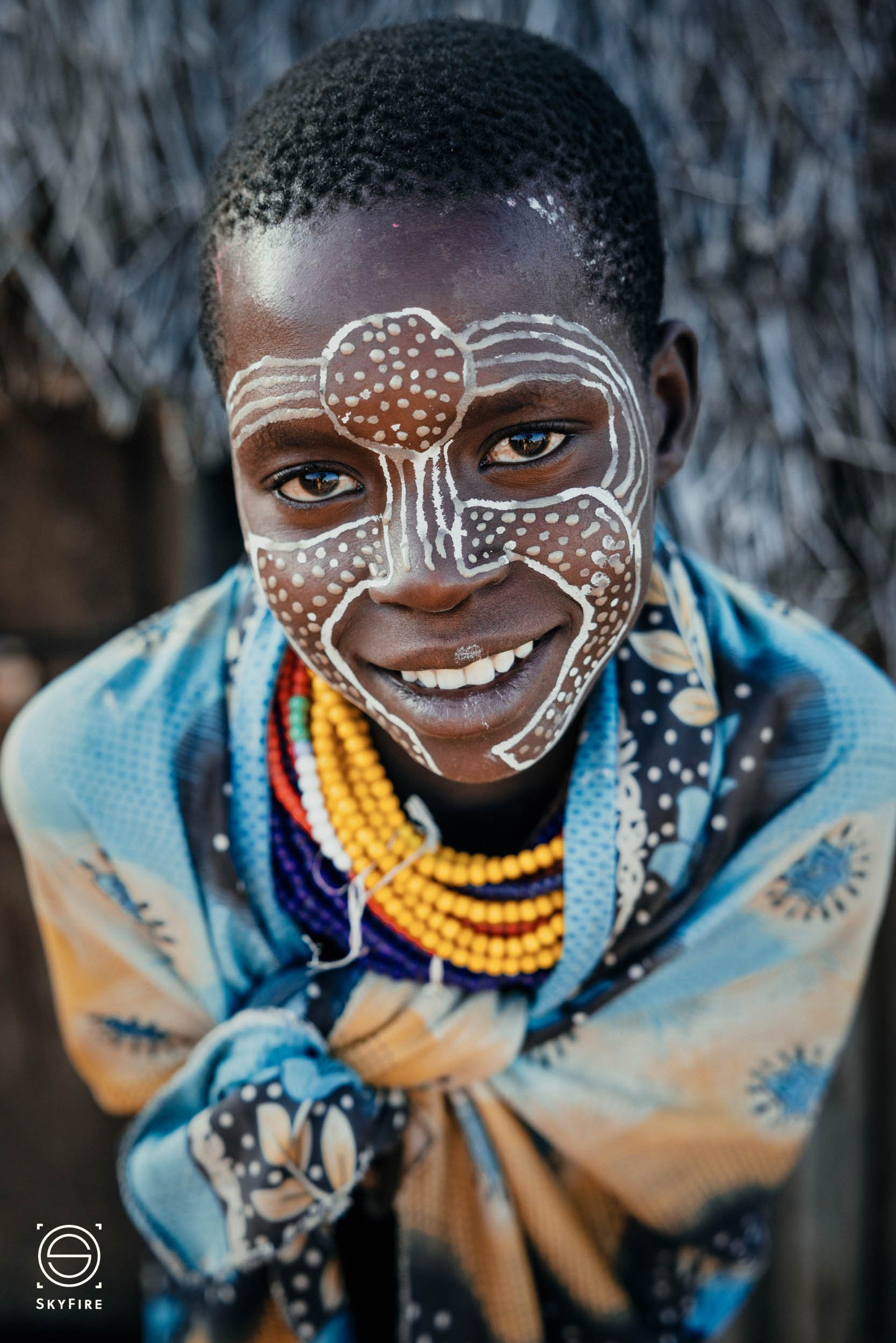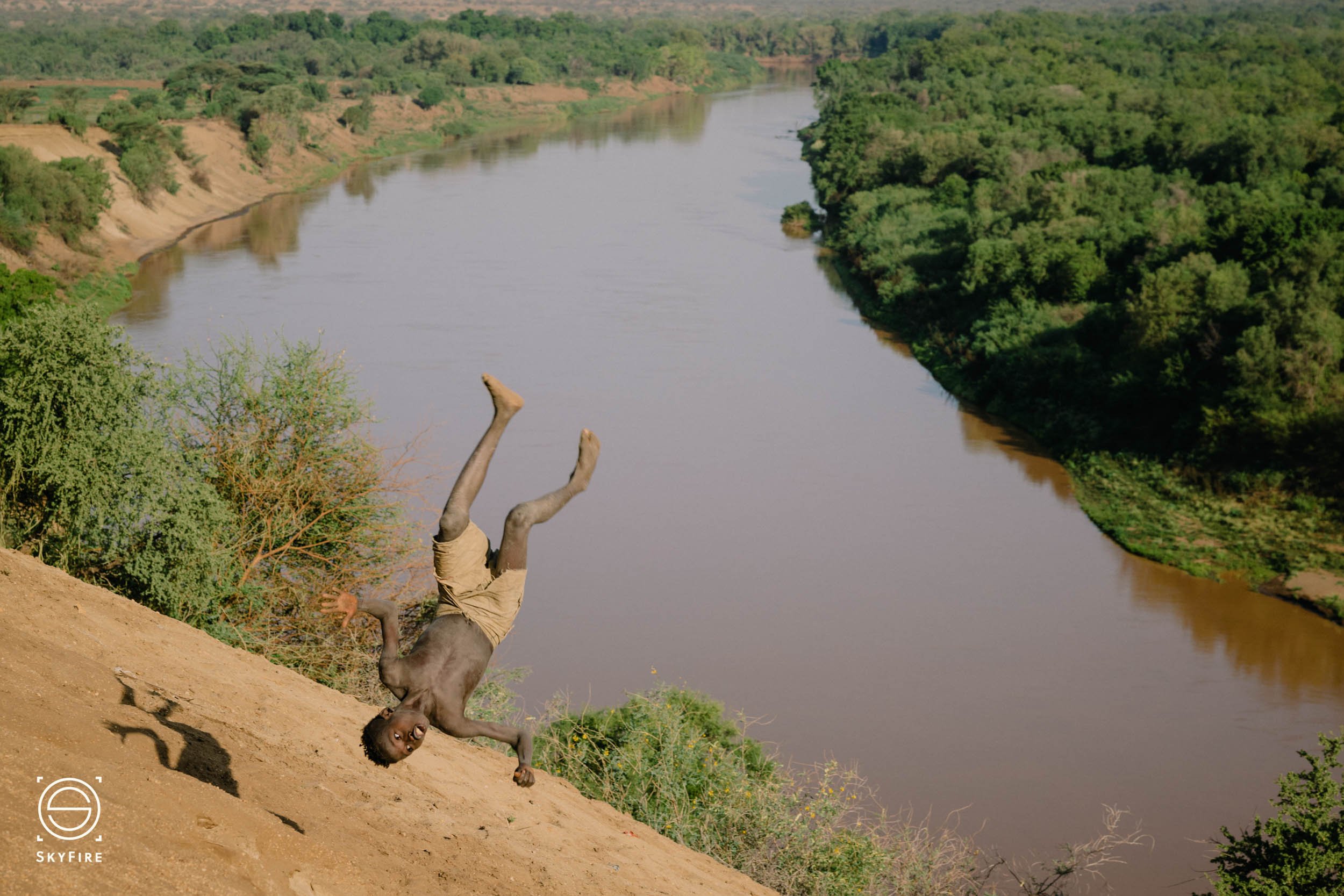Kara Tribe
Hello: Tsalu
Perched on a bend on the Omo River with sweeping vistas is the village of Korcho. We arrived in the early morning when the sun was still low and the village was coming to life.
The Kara (or Karo) is one of the smallest tribes we visited. Various reports online put their population at just 1,000-1,500 people, however, our guide told us that there are about 8,000 Kara spread across three villages. Korcho had about 2,000 people living in it.
The Kara are known for the their ornate body painting using coloured ochre, white chalk, yellow mineral rock, charcoal, and pulverized iron ore, all natural resources local to the area. The designs drawn on their bodies can change daily and vary in content, ranging from simple stars or lines to animal motifs, such as guinea fowl plumage, or the most popular – a constellation of handprints covering the torso and legs.
Given the small size of the village and their proximity to the town of Turmi and tourist money, it’s unclear how much the body painting is done just for the sake of tourists, but the Kara are happy to have their photo taken and were happy to smile for the camera - something of a departure from the rest of the tribes.
The Kara language and culture is similar to the Hamer and Banna tribes and like these tribes the Kara also perform bull-jumping ceremonies but only once per year. In the Kara version, the young man has to jump the bulls six times, compared to just four in the Hamer tradition.
Ear Cutting
The Kara are the only tribe we came across, that I’m aware of, where the men engaged in disfigurement as a symbol of their marital status. Kara men are known for having body scars, particularly on their chests signifying they have killed an enemy in battle. Each scar representing one kill.
What was unique, however, and which I don’t find referenced in almost any literature, is the practice of cutting the top of the ear to show that they are married. From talking to our guide and the local men, it seems that it’s the top of the left ear that has a notch taken out of it when they marry. I didn’t see if any of the younger men still practice this tradition or if it is fading out.















